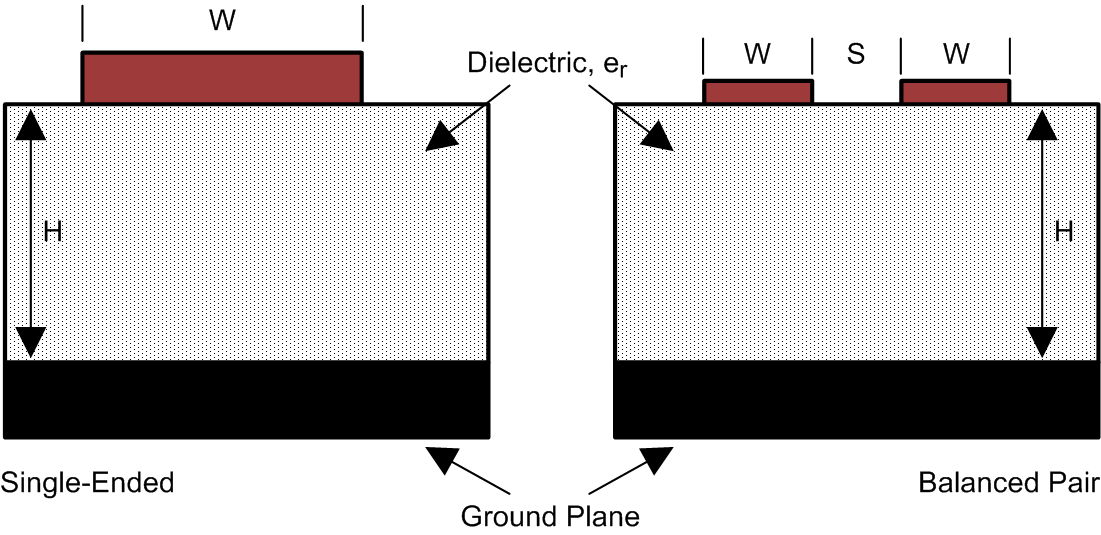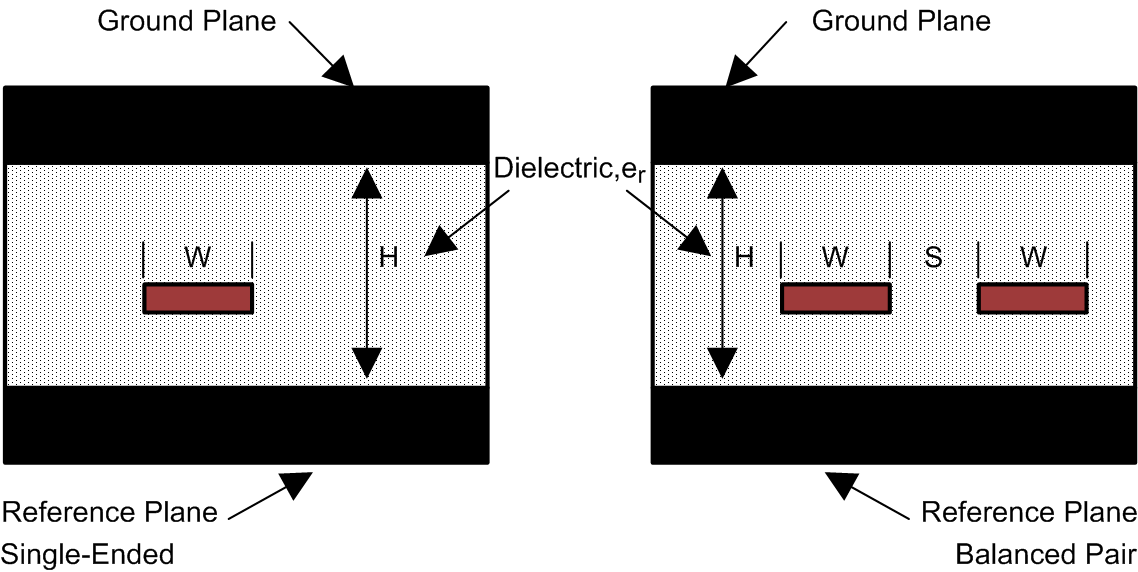JAJSGT3B September 2005 – January 2019 DS90LT012AH
PRODUCTION DATA.
11.1.1 Microstrip vs. Stripline Topologies
As per the LVDS Application and Data Handbook (SLLD009), printed-circuit boards usually offer designers two transmission line options: Microstrip and stripline. Microstrips are traces on the outer layer of a PCB, as shown in Figure 16.
 Figure 16. Microstrip Topology
Figure 16. Microstrip Topology On the other hand, striplines are traces between two ground planes. Striplines are less prone to emissions and susceptibility problems because the reference planes effectively shield the embedded traces. However, from the standpoint of high-speed transmission, juxtaposing two planes creates additional capacitance. TI recommends routing LVDS signals on microstrip transmission lines when possible. The PCB traces allow designers to specify the necessary tolerances for ZO based on the overall noise budget and reflection allowances. Footnotes 1(2), 2(3), and 3(4) provide formulas for ZO and tPD for differential and single-ended traces. (2)(3)(4)
 Figure 17. Stripline Topology
Figure 17. Stripline Topology